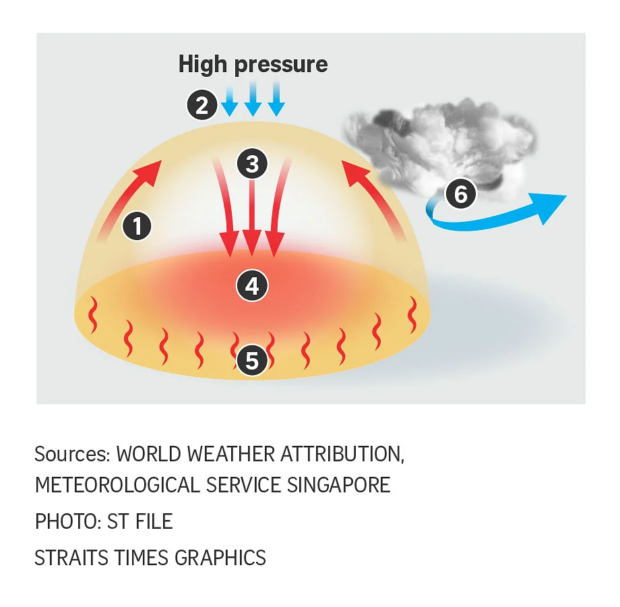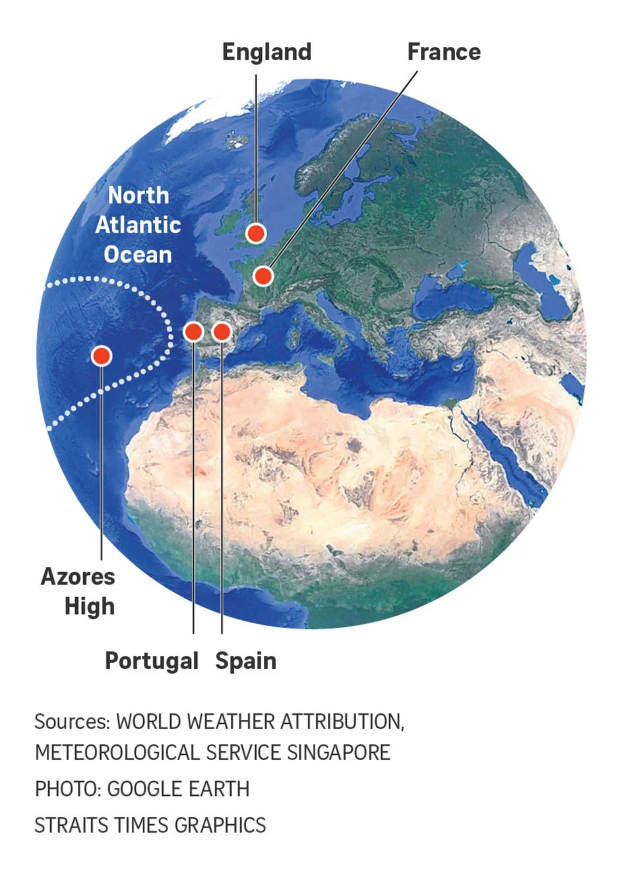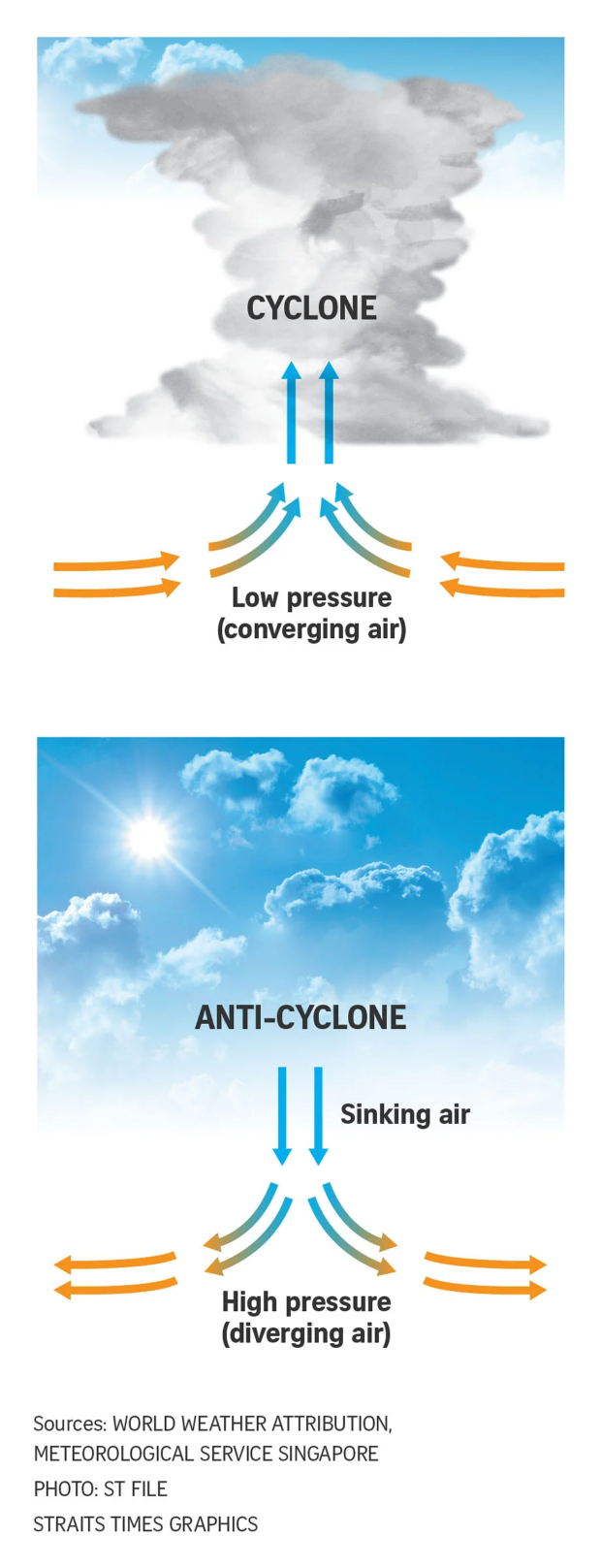Why are countries around the world experiencing heatwaves?

People cooling themselves in the fountain outside the Louvre in Paris on July 19, 2022. PHOTO: EPA-EFE via The Straits Times/Asia News Network
The Straits Times looks at the reasons behind scorching temperatures around the world and their link to climate change.
What are heatwaves?
- Warm air rises from the ground
- High pressure cells in the atmosphere push warm air back towards the ground
- The pressure traps hot air like a lid on a pot
- Warm air compresses as it sinks, releasing more heat
- Heat causes the ground to lose moisture and become even warmer, increasing the risk of wildfires
- Fewer clouds are formed and this allows more sunlight to penetrate and warm the earth
Heatwaves around the world
Europe (England, Spain, Portugal, France)

A firefighter standing guard against a fire in the village of Tabara, near Zamora, north-west Spain, on July 18, 2022. PHOTO: AFP
How hot
In England, train tracks buckled, electricity companies reported mass outages and large grassland areas around London caught fire.
The authorities across southern Europe battled against huge wildfires in Spain, Greece and France on July 17, 2022.
Hundreds of deaths were blamed on soaring temperatures.
Article continues after this advertisementCause
The intense heat felt across Europe in the past few weeks is mainly due to the Azores High – a slow-moving semi-permanent high pressure cell, said Professor Matthias Roth from the Department of Geography at the National University of Singapore (NUS).
Climate change has exacerbated the frequency of an extremely large Azores High, said National Institute of Education Assistant Professor Wang Jingyu.
What used to happen only once in 10 years in the pre-industrial period now occurs once every four years, said Prof Wang.
South Asia (India, Pakistan)
How hot
Record-shattering extreme temperatures were recorded between March and May, peaking at 50 deg C.
About 300 forest firest occurred in India in a single day on April 28, 2022.
Cause
As the climate warms, intense anti-cyclones are spawned more often, bringing heatwaves to India, said Singapore University of Social Sciences climate scientist Koh Tieh Yong.
Climate change reportedly made heatwaves in the region 30 times more likely.
Singapore
How hot
The last heatwave was in April 2016, the hottest year recorded, with an annual mean temperature of 28.4 deg C.
Singapore experienced, on average, one to two heatwaves per decade.
A heatwave in Singapore is defined as three consecutive days when daily maximum temperatures are at least 35 deg C. The daily mean temperature during the period should be at least 29 deg C.
Cause
Singapore does not have large-scale high pressure systems, but localised systems can still produce heatwaves, said Prof Wang.
The 2016 heatwave was due to a natural climate phenomenon called El Nino, which brings warm and dry conditions.
More frequent and extended heatwaves with higher extreme temperatures are expected to hit Southeast Asia as the world warms, said director Benjamin Horton of Nanyang Technological University’s Earth Observatory of Singapore.
RELATED STORIES
Explainer: How climate change drives heatwaves and wildfires
Explainer: The health risks of extreme heat
Floods, fires, heatwaves: US struggles with climate catastrophe
UK breaches 40°C for first time, heat records tumble in France




